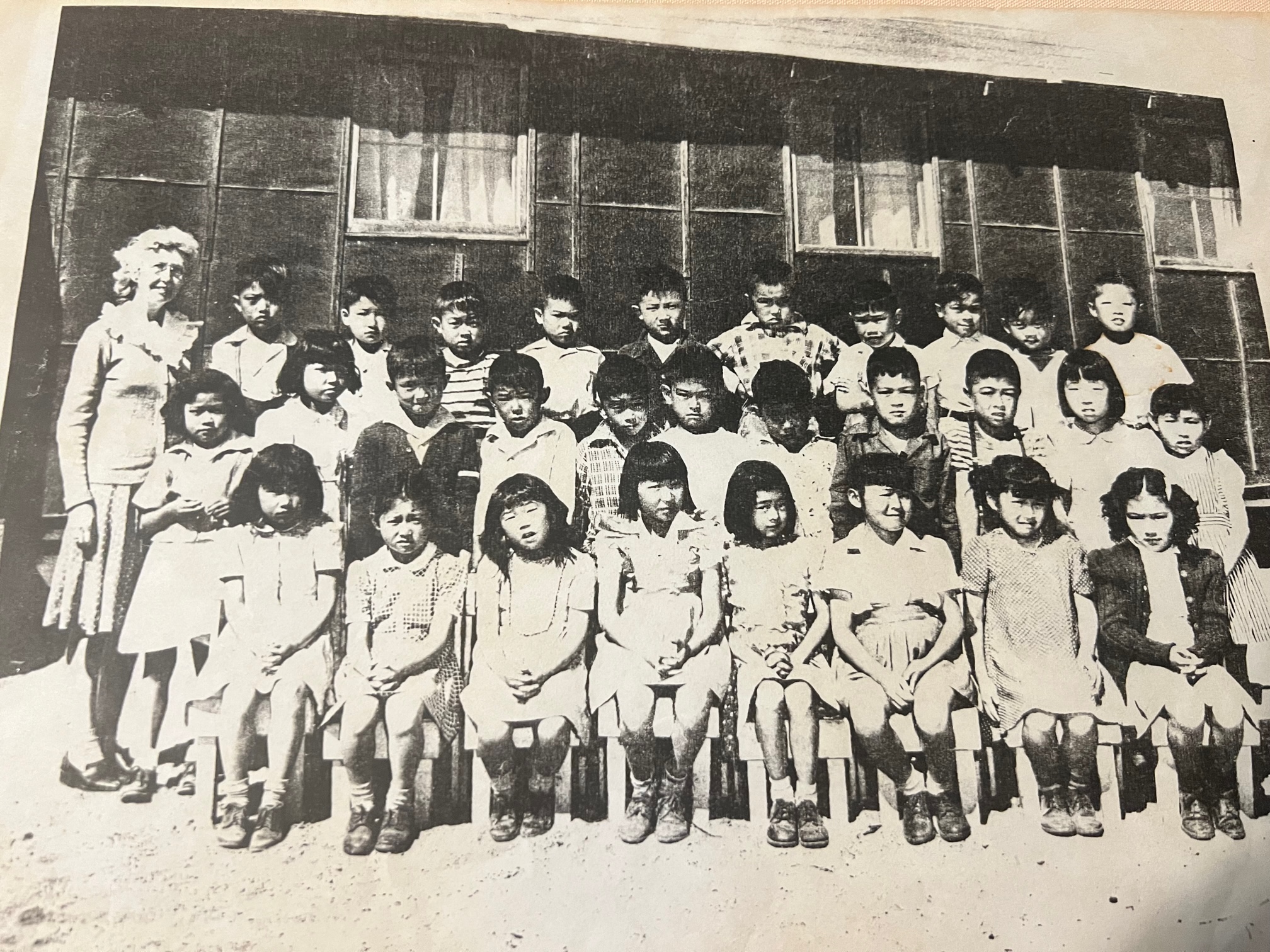A Snapshot of Japanese American History in WWII
Grade 6 students had the opportunity to welcome parent Jessica Baba to discuss her family’s story.
This was a continuation of their lessons around photo essays and storytelling as a literary tool and to accompany their reading of Seen and Unseen by Elizabeth Partridge and Lauren Tamaki, and Fred Korematsu Speaks Up by Laura Atkins and Stan Yogi.
In Seen and Unseen, the authors show the reality of the internment camps in a graphic novel format through the eyes of three famed photographers: Ansel Adams, Toyo Miyatake, and Dorothea Lange. Fred Korematsu Speaks Up details the plight of one man who resisted the internment and became a fugitive then later a civil rights activist.
Jessica shares:
Studying photo essays and using narrative storytelling is an engaging way to learn about historical events and the people in the photos and stories. Three of my grandparents were born in Los Angeles, CA, and one was born in Washington state. They were ages 5, 8, 18, and 19 when they were incarcerated during World War II, previously referred to as "internment camps" or "war relocation centers," because of their Japanese ancestry, although all were American citizens. My grandmother was five when she was sent to Manzanar (located in the desert a few hours outside of Los Angeles), the camp that is the primary focus of Seen and Unseen. I told the students about the time my grandmother was walking down the street in Los Angeles in the 1980s and saw herself in a photo of the Manzanar kindergarten class forty years earlier. It was hanging in the studio window of Toyo Miyatake. He was one of the three photographers featured in the book. She had never seen the photo before, despite the fact that my mother grew up with Toyo Miyatake's grandsons. I shared family photos, anecdotes about camp, and the personal experiences of my grandparents, as well as how the incarceration of the Japanese has impacted our lives generations later. For example, my cousins and niece are the third generation of my family to play basketball in the Japanese basketball leagues in Southern California. These leagues have roots in the incarceration camps and have thrived as a means of community-building since the 1940s. Sharing the stories of our family is a way of preserving history with the class of '29!

Above is a photo of Jessica’s grandmother (front row, second from the left) taken by Toyo Miyatake. Jessica shares, “My grandma said she yelled, ‘HEY, THAT'S ME!’ while walking down the street in Little Tokyo.” This picture from 1942 was enlarged and hung in the window. It is in his collection of photos that he took at Manzanar. The story goes that he secretly took pictures but was later sanctioned to do so. Because he was Japanese, he was not allowed to “take” them (a white person had to take the photo after he framed it). Jessica shares, “The teachers all lived in the camps but had their own neighborhoods with nice houses instead of the barracks built for the Japanese families. Pretty wild - apparently, my mom grew up with the grandson that now runs Toyo Miytake's studio (he's passing it to his daughter soon, so it'll be a fourth-generation studio), and it's in the neighborhood where I grew up. We all had photos taken by that family, but I never knew their family history until I studied Japanese incarceration later in life.”
Along with her stories, Jessica also shared some of her favorite childhood treats, including strawberry-filled koalas, Japanese Kit Kats, and Hi-Chew candy.








